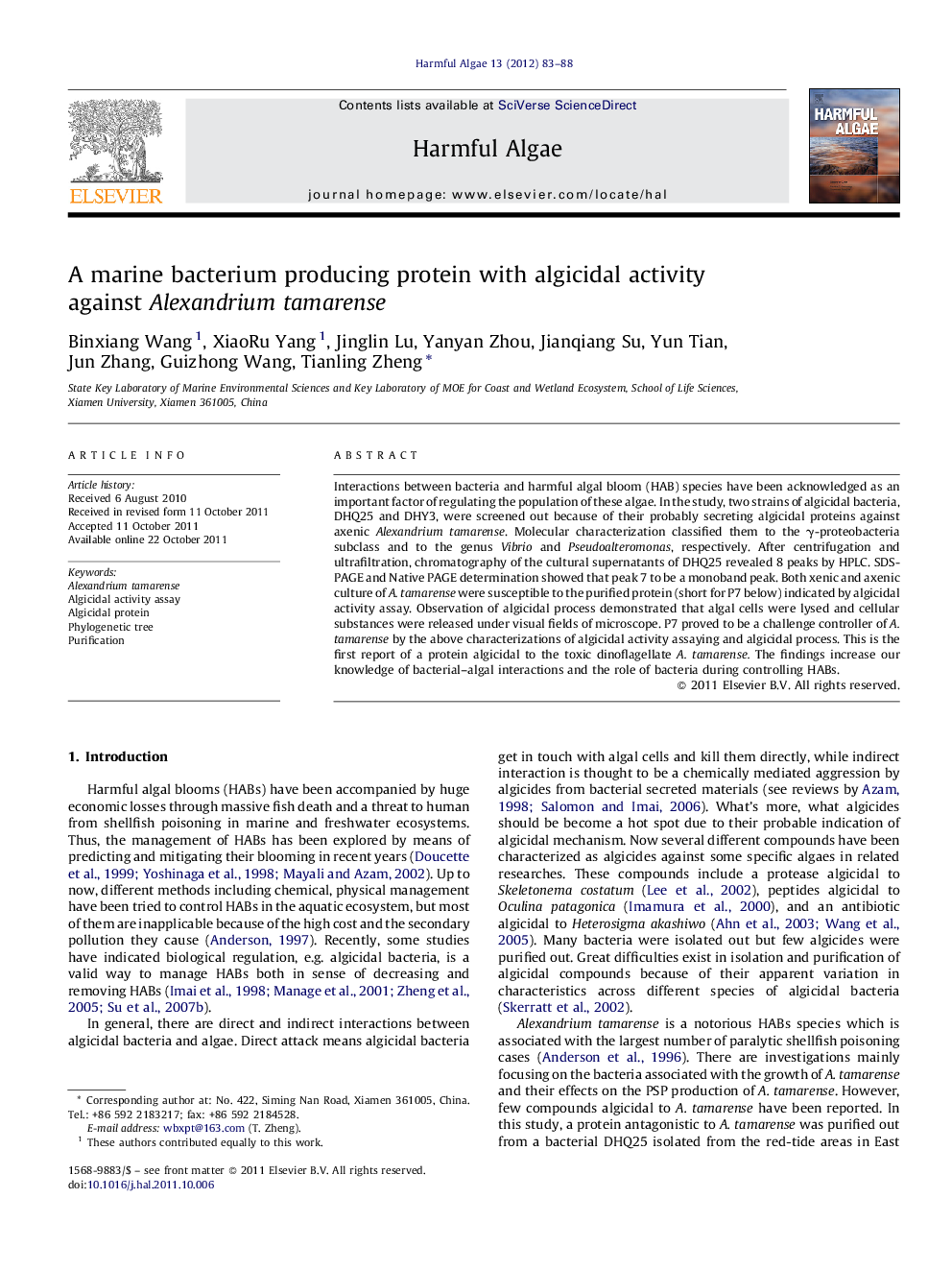| Article ID | Journal | Published Year | Pages | File Type |
|---|---|---|---|---|
| 4545659 | Harmful Algae | 2012 | 6 Pages |
Interactions between bacteria and harmful algal bloom (HAB) species have been acknowledged as an important factor of regulating the population of these algae. In the study, two strains of algicidal bacteria, DHQ25 and DHY3, were screened out because of their probably secreting algicidal proteins against axenic Alexandrium tamarense. Molecular characterization classified them to the γ-proteobacteria subclass and to the genus Vibrio and Pseudoalteromonas, respectively. After centrifugation and ultrafiltration, chromatography of the cultural supernatants of DHQ25 revealed 8 peaks by HPLC. SDS-PAGE and Native PAGE determination showed that peak 7 to be a monoband peak. Both xenic and axenic culture of A. tamarense were susceptible to the purified protein (short for P7 below) indicated by algicidal activity assay. Observation of algicidal process demonstrated that algal cells were lysed and cellular substances were released under visual fields of microscope. P7 proved to be a challenge controller of A. tamarense by the above characterizations of algicidal activity assaying and algicidal process. This is the first report of a protein algicidal to the toxic dinoflagellate A. tamarense. The findings increase our knowledge of bacterial–algal interactions and the role of bacteria during controlling HABs.
► DHQ25 and DHY3 were two algicidal bacterial isolates against Alexandrium tamarense. ► They were to the genus Vibrio and Pseudoalteromonas, respectively. ► The algicidal protein produced by DHQ25 was purified out using RP-HPLC. ► Both axenic and xenic A. tamarense were lysed thoroughly by the purified protein. ► It was the first report of a protein antagonistic to toxic A. tamarense.
